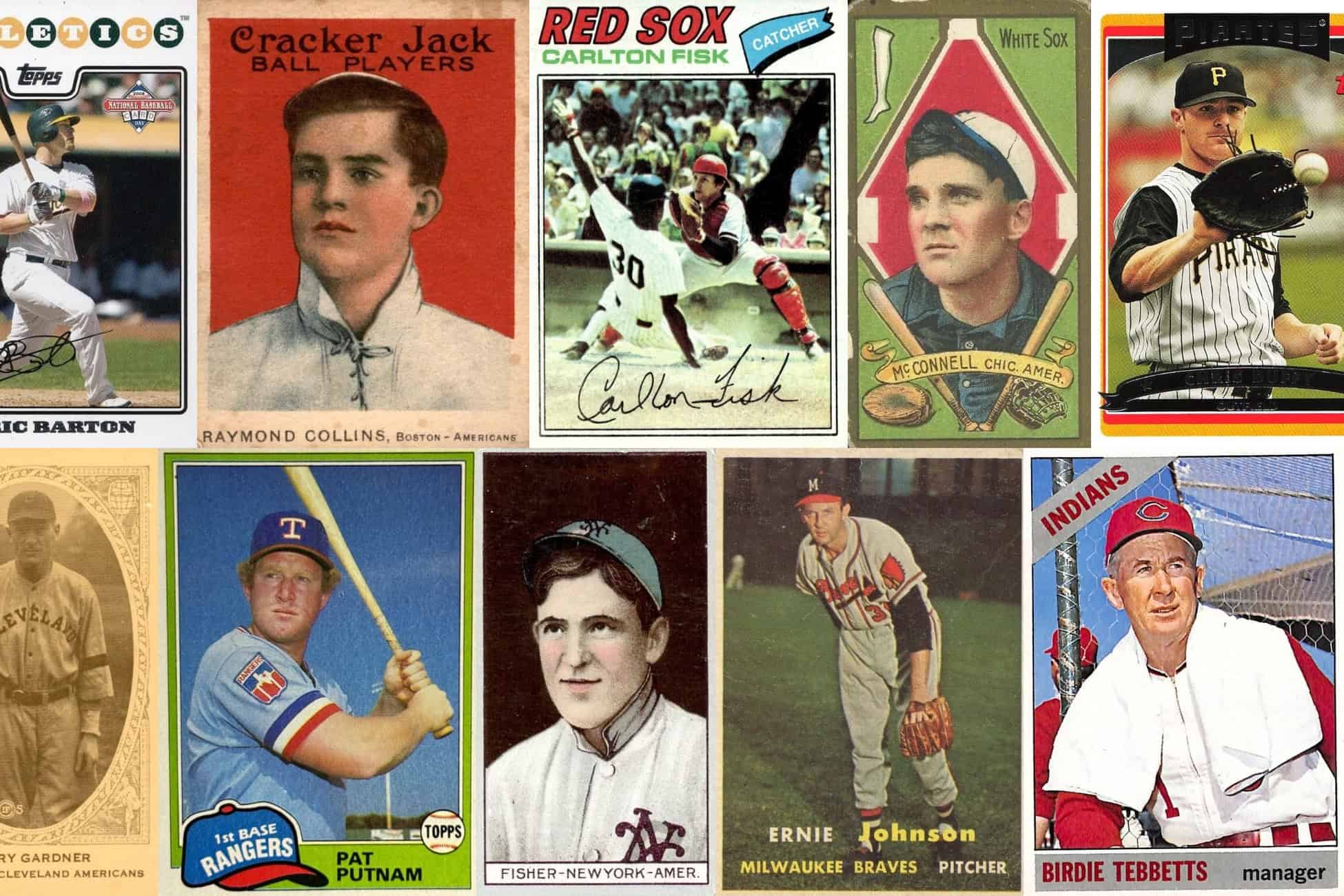Vermont is known as “The Brave Little State,” for many reasons, including its size and scrappiness. You’d be forgiven for thinking that it’s not a hotbed of baseball activity, but the state has produced over 30 MLB players from Vermont, including one Hall of Famer. While it may lack the year-round playing conditions of California or Florida, Vermont has quietly contributed its share of talent to the major leagues, with players who’ve left a lasting mark on the game despite humble beginnings.
From 19th-century pioneers to mid-century stars and modern role players, Vermont’s baseball legacy is deeper than many realize. These athletes often came up through small-town sandlots, local high school programs, and in some cases, military service before breaking into the big leagues. Their stories reflect the state’s spirit – tough, overlooked, and fiercely determined. This article explores the most notable MLB players from Vermont, including the lone Hall of Famer who stands as a towering symbol of the state’s underappreciated contribution to America’s pastime.
History of Baseball in Vermont
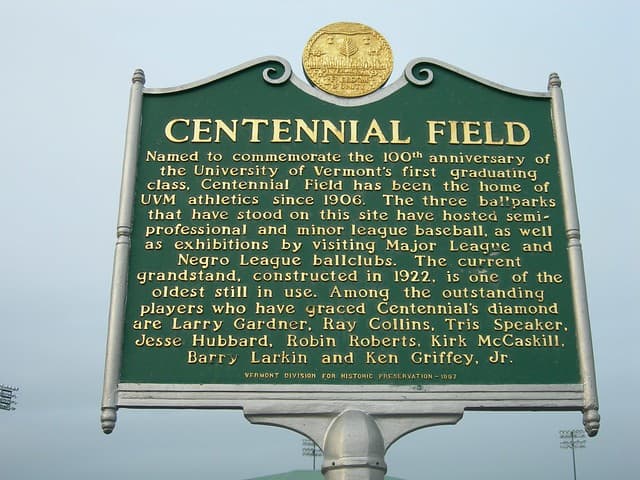
Baseball has deep roots in Vermont, dating back to the 19th century when it flourished as a local pastime in town greens and schoolyards. By the mid-to-late 1800s, Vermont communities began forming organized clubs, often tied to local industries or social organizations. Town teams competed in loosely structured leagues, and by the 1880s and 1890s, newspapers across the state regularly reported box scores and standings from spirited regional contests. College baseball also played a major role in the sport’s early growth in Vermont, with schools like the University of Vermont fielding teams as early as the 1880s. Centennial Field, built in 1906 in Burlington, became a lasting symbol of the state’s baseball heritage.
In the 20th century, Vermont occasionally hosted professional minor league clubs, though these efforts were often short-lived. One of the more notable examples was the Montpelier-Barre franchise, which competed in the Class B Northern League during the 1920s. This team drew fans from both cities and marked a rare foray into professional baseball for the central part of the state. Though the league itself was relatively obscure, the Montpelier-Barre club stood out for its level of play and the enthusiasm it generated in the region.
Later, in the 1980s, Vermont briefly hosted Double-A teams such as the Vermont Reds and Vermont Mariners – affiliates of the Cincinnati Reds and Seattle Mariners – which brought future major leaguers to the Green Mountain State. Although these ventures were ultimately short-lived due to financial and geographic challenges, they remain a testament to the state’s enduring enthusiasm for baseball.
Fred Mann, outfielder, 1882-1887
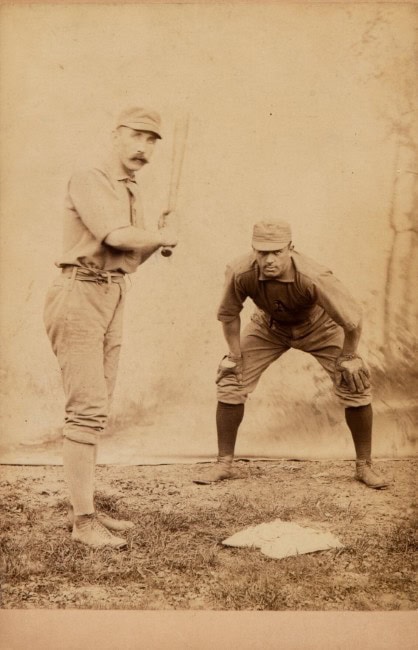
Fred Mann holds the distinction of being the first of many MLB players from Vermont. Born in Sutton (or “Su’on” to locals), Vermont on April 1, 1858, Mann debuted in 1882 with the Worcester Ruby Legs. He played six seasons in the majors, spending time with the Worcester Ruby Legs, Philadelphia Quakers, Pittsburgh Alleghenys, and Cleveland Blues during the formative years of professional baseball.
A right-handed outfielder, Mann was known for his steady play and offensive consistency. His best season came in 1883 with the Philadelphia Quakers, when he batted .281, drove in 67 runs, and stole 45 bases. Over his career, he totaled 428 hits, 10 home runs, 247 runs batted in, and 135 stolen bases, finishing with a .262 lifetime average. Mann retired after the 1886 season and passed away in Springfield, Massachusetts, in 1916. While few fans today may recognize his name, his legacy as a pioneer of MLB players from Vermont remains part of the state’s baseball history.
Birdie Tebbetts, catcher/manager, 1936-1952, 1954-1966
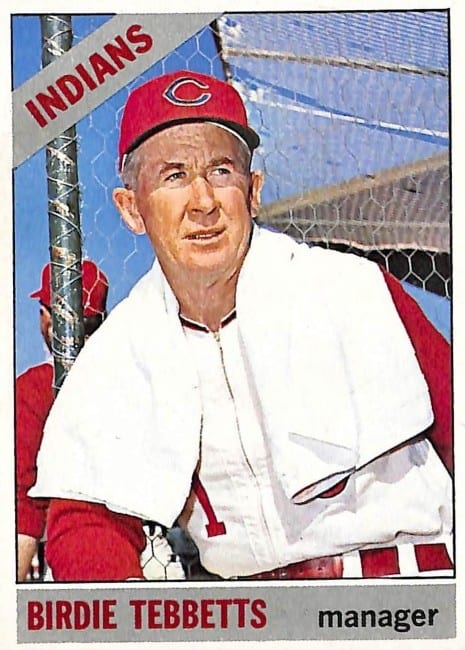
George Robert “Birdie” Tebbetts was born in Burlington, Vermont, on November 10, 1912. Though he moved to Nashua, New Hampshire, as a child, his early ties to Vermont remain part of his story. Tebbetts played 14 seasons in the major leagues, primarily with the Detroit Tigers and Boston Red Sox, and later built a second career as a successful manager and executive.
Tebbetts debuted with the Tigers in 1936 and quickly gained a reputation as a tough, smart backstop with strong defensive skills and sharp leadership. He played in four All-Star Games and appeared in the 1940 World Series. His best offensive season came in 1940, when he batted .296 with 63 runs batted in and helped guide Detroit’s pitching staff to the American League pennant. Over his career, Tebbetts recorded 1,171 hits, 38 home runs, and 469 RBI, finishing with a .270 batting average.
After serving in World War II, Tebbetts returned to the game and transitioned to managing in the early 1950s. He led the Cincinnati Reds, Milwaukee Braves, and Cleveland Indians over a span of 11 seasons, earning a reputation for turning around struggling clubs and mentoring young players. Later in life, he worked in front-office and scouting roles for teams including the New York Yankees and Baltimore Orioles. Though he was never inducted into the Hall of Fame, Tebbetts was widely respected for his leadership, baseball acumen, and long-lasting impact on the game. He passed away in 1999 at the age of 86.
Ray Fisher, pitcher, 1910-1920
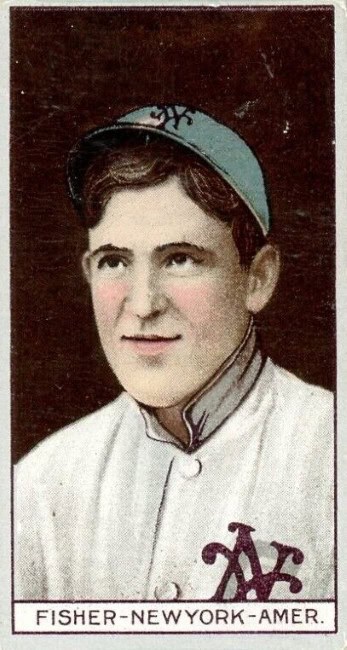
Ray Fisher was born in Middlebury, Vermont, on October 4, 1887, and carved out a solid career as a major league pitcher before becoming one of the most influential college coaches of his era. He pitched in the big leagues for ten seasons between 1910 and 1920, first with the New York Highlanders (later the Yankees) and later with the Cincinnati Reds. Known for his control and calm demeanor on the mound, Fisher compiled a 100-94 record and a 2.82 career ERA.
Fisher debuted with the Highlanders in 1910 and became a reliable arm in their rotation, posting double-digit wins in four different seasons. His best year came in 1915 when he went 18-11 with a 2.11 ERA. After moving to the National League in 1919, Fisher played a key role in the Reds’ pennant-winning season, though he did not pitch in the infamous 1919 World Series. He returned to Cincinnati in 1920, but a contract dispute with team management effectively ended his major league career.
Following his departure from professional baseball, Fisher accepted a position as head baseball coach at the University of Michigan in 1921 – a role he held for 38 years. Under his leadership, the Wolverines became a powerhouse in collegiate baseball, and Fisher mentored dozens of players who would go on to the pros. His impact at Michigan was so profound that the university named its baseball stadium Ray Fisher Stadium in his honor. He remained active in the game well into retirement and lived to the age of 95, passing away in 1982.
Larry Gardner, infielder, 1908-1924
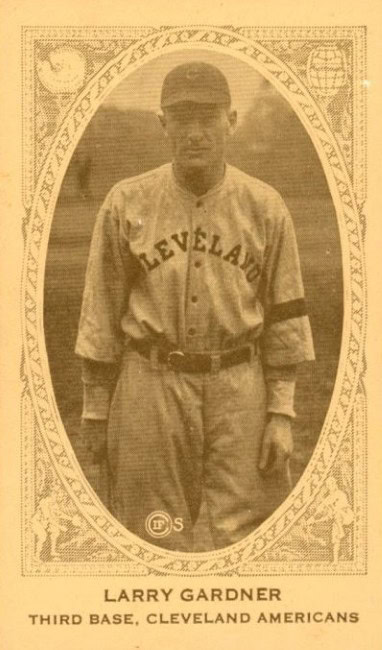
Larry Gardner was born in Enosburg Falls, Vermont, on May 13, 1886, and became one of the most accomplished major leaguers to hail from the state. A steady and dependable third baseman, Gardner played 17 seasons in the majors from 1908 to 1924, mostly with the Boston Red Sox. He was a key contributor to four World Series championship teams and was known for his clutch hitting and reliable glove.
Gardner broke into the big leagues with Boston in 1908 and quickly established himself as a fixture in the lineup. He helped the Red Sox win the World Series in 1912, 1915, and 1916, and later added another title with the Cleveland Indians in 1920. In the 1912 Series, he hit .308 with two triples and a home run, including a game-winning sacrifice fly in the decisive Game 8. Over his career, Gardner collected 2,007 hits, 27 home runs, and 934 RBI while batting .289. He also scored over 1,000 runs and was often among league leaders in doubles and sacrifice hits.
After retiring from professional baseball, Gardner was always remembered as one of the MLB players from Vermont. He returned to his home state and later became the athletic director and baseball coach at the University of Vermont. He remained active in the state’s sports scene for decades and earned a reputation as a respected figure in both collegiate and professional baseball circles. Gardner passed away in 1976 at the age of 89, leaving behind a career marked by consistency, championships, and quiet excellence.
Ray Collins, pitcher, 1909-1915
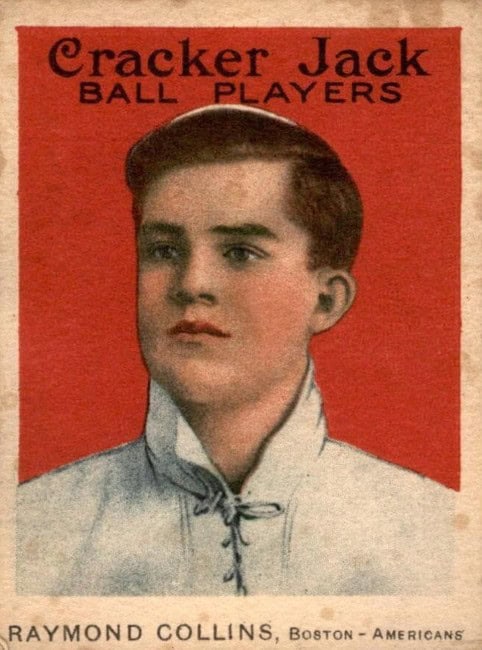
Ray Collins was born in Colchester, Vermont, on February 11, 1887, and became one of the most successful MLB players from Vermont. A left-hander with excellent control and poise, Collins spent his entire major league career with the Boston Red Sox, pitching from 1909 to 1915. Though his time in the majors was brief, he was a consistent and valuable part of Boston’s rotation during a key stretch in the club’s early championship era.
Collins broke into the big leagues in 1909 and quickly established himself as a dependable starter. He won at least 11 games in five straight seasons and reached a career-high of 20 wins in 1914. That year, he posted a 2.51 ERA and threw 283.1 innings across 36 starts. Over his seven-season career, he compiled an 84-62 record, a 2.51 ERA, and 511 strikeouts in 1,336.2 innings pitched. Collins was known for his sharp breaking ball and his ability to limit walks, averaging just 2.1 free passes per nine innings.
After retiring at the age of 28, Collins returned to Vermont and became a well-known figure in the community. He worked as a farmer and later served in the Vermont legislature. He also maintained ties to the University of Vermont, where he had starred before joining the Red Sox. Collins passed away in 1970 at the age of 83, remembered both for his accomplishments on the mound and his dedication to his home state.
Pat Putnam, first baseman, 1977-1984
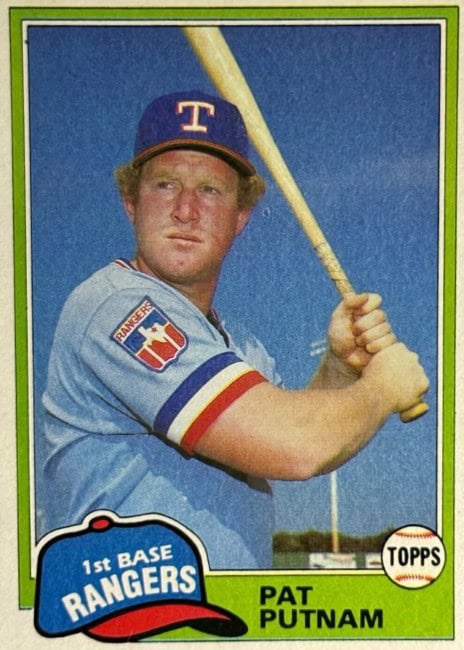
Pat Putnam was born in Bethel, Vermont, on December 3, 1953, and played seven seasons in the major leagues as a left-handed first baseman. Known for his size and power, Putnam spent most of his career with the Texas Rangers before finishing with brief stints on the Mariners, Twins, and Royals. Though he showed flashes of run-producing ability, his overall career value remains a statistical curiosity.
Putnam debuted with the Rangers in 1977 and had his best season in 1979, when he hit .277 with 18 home runs and 64 runs batted in over 137 games. That year, he finished fourth in American League Rookie of the Year voting. Over the course of his career, he appeared in 663 games and racked up 1,920 at-bats, hitting .255 with 63 home runs and 255 RBI. Despite those counting stats, his career Wins Above Replacement (bWAR) totaled just 0.7, reflecting a limited defensive impact and below-average on-base skills.
After leaving the majors in 1984, Putnam spent time playing in Japan before retiring from professional baseball. While his career may not have reached the heights some expected, his combination of raw power and early promise still earned him a place in the story of major leaguers from Vermont.
Daric Barton, first baseman, 2007-2014
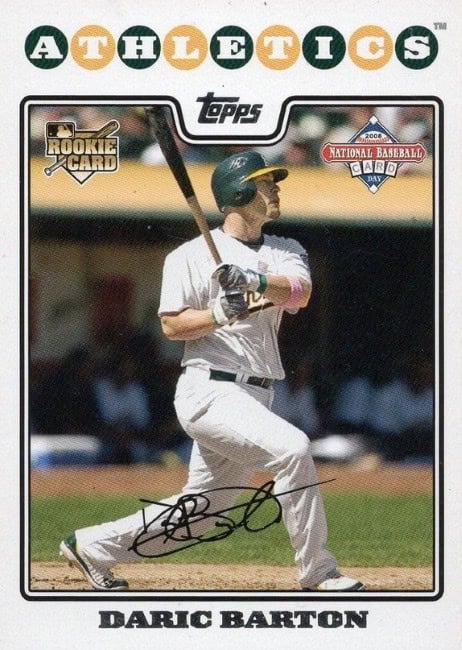
Daric Barton, born on August 16, 1985, in Springfield, Vermont. He was a left-handed first baseman and the most recent of the MLB players from Vermont. Drafted by the St. Louis Cardinals in the first round of the 2003 MLB Draft, the Oakland Athletics traded Barton in 2004 as part of the deal for pitcher Mark Mulder. He made his MLB debut with the A’s on September 10, 2007, and spent the majority of his career with Oakland, playing in 551 games over eight seasons through 2014.
Barton was recognized for his patience at the plate, especially during the 2010 season, when he led the American League with 110 walks and posted a .393 on-base percentage. Over his career, Barton accumulated a .247 batting average with 30 home runs and 184 RBIs across 1,744 at-bats. While his power numbers were modest, his on-base skills were exceptional, contributing to a career Wins Above Replacement (bWAR) of 8.9. Barton’s defensive skills also earned him recognition, as he won a Fielding Bible Award in 2010 for his work at first base.
After his time in the majors, Barton continued his baseball career in the Mexican League, where he helped the Pericos de Puebla win their first championship in over 30 years in 2016, hitting 21 home runs that season. Barton retired from professional baseball after the 2018–19 Mexican Pacific League season, but his career remains notable for his strong on-base skills, defensive consistency, and ability to impact the game in ways that went beyond traditional statistics.
Carlton Fisk, catcher, 1969-1993 (HOF)
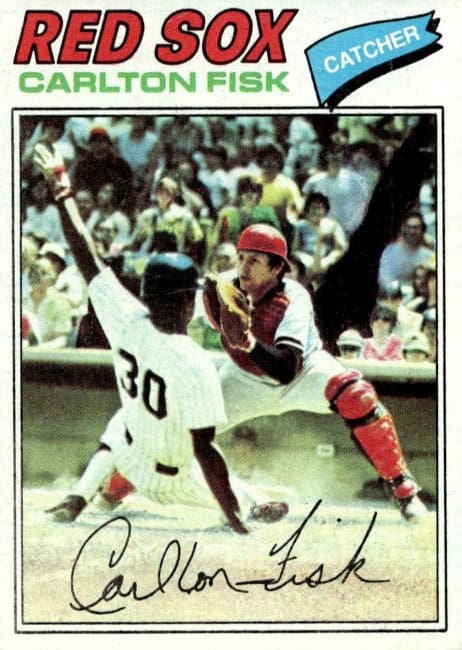
Carlton Fisk was born on December 26, 1947, in Bellows Falls, Vermont. He widely regarded as one of the greatest catchers in baseball history. Fisk’s career spanned 24 seasons, primarily with the Boston Red Sox and the Chicago White Sox, where he became known for his powerful bat, exceptional defensive skills, and iconic moments. Fisk was a 11-time All-Star and a key player in both the American League and World Series, earning his place in the Baseball Hall of Fame in 2000.
Fisk’s MLB debut came with the Red Sox in 1969, and over his career, he played 2,226 games. Known for his leadership behind the plate and strong arm, Fisk hit 376 home runs and accumulated 1,330 RBIs with a .269 career batting average. His best season came in 1977 when he led the American League with 26 home runs and a career-high 102 RBIs. Fisk is perhaps most famous for his dramatic game-winning home run in Game 6 of the 1975 World Series, a moment still etched in baseball lore. His career WAR of 68.2 reflects his substantial impact on both offense and defense, making him one of the most well-rounded catchers to ever play the game.
Fisk spent the majority of his career with the Red Sox before signing with the White Sox in 1981. He continued to play at a high level with Chicago, finishing his career with the White Sox in 1993. Fisk’s leadership and enduring talent earned him numerous accolades, and his contributions to the game are still remembered today. He remains a beloved figure in both Boston and Chicago. After his retirement, Fisk remained involved in baseball and continues to be regarded as one of the sport’s most respected figures.
Baseball in Vermont Today
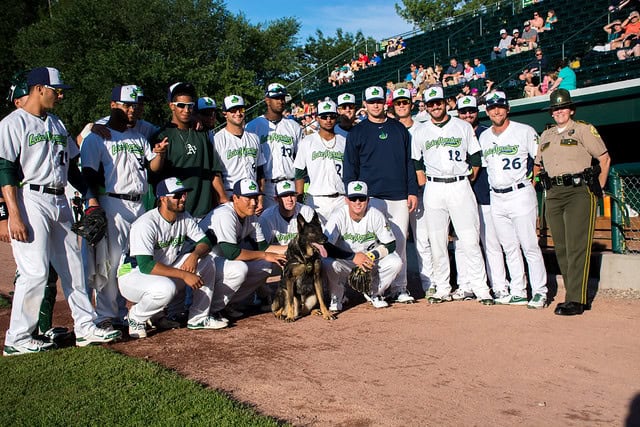
Baseball in Vermont continues to thrive through a network of collegiate summer teams that have become integral to the state’s sports culture. Leading the charge are the Vermont Lake Monsters, based in Burlington. After losing their Minor League Baseball affiliation in 2020, the Lake Monsters joined the Futures Collegiate Baseball League (FCBL) in 2021. They quickly found success, winning the league championship in their inaugural season. Playing at the historic Centennial Field, the team has maintained strong community support, drawing substantial crowds and keeping the spirit of baseball alive in the region.
In addition to the Lake Monsters, Vermont hosts other notable teams in the New England Collegiate Baseball League (NECBL). The Vermont Mountaineers, established in 2003 and based in Montpelier, have a history of success with three league championships to their name. Similarly, the Upper Valley Nighthawks, founded in 2015 and playing in Hartford, have become a staple in the NECBL, providing opportunities for collegiate players to develop and for fans to enjoy competitive baseball during the summer months.
While Vermont lacks a Major League Baseball team, these collegiate summer teams play a crucial role in sustaining the state’s baseball tradition. They offer affordable, family-friendly entertainment and serve as a platform for aspiring athletes. The continued success and community engagement of teams like the Lake Monsters, Mountaineers, and Nighthawks underscore the enduring passion for baseball in Vermont.
